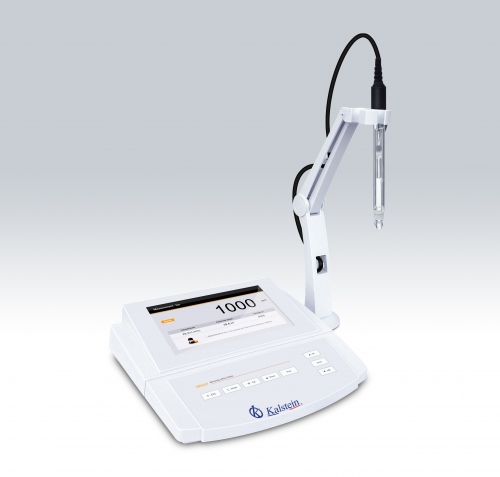pH meters are valuable analytical devices, indispensable for a multitude of sectors in science and industry. First, to understand how a pH meter works, it is necessary to understand what pH is. The pH is a measure of the acidity or alkalinity of a solution, expressed on a scale from 0 to 14.
But how is this measurement performed? The key factor in the operation of these meters is the glass electrode, the main part that allows the concentration of hydrogen ions to be differentiated. When this electrode is introduced into the solution to be analyzed, a potential difference (voltage) proportional to the pH of the solution is generated. This voltage is translated into a pH reading by the meter, thus allowing accurate quantification.
The components of a pH meter
A standard pH meter consists of two important parts: the glass electrode and the display unit.
The electrode is the spearhead of pH measurement. At the microscopic level, the thin glass layer of the electrode interacts with the hydrogen ions in the solution, generating a potential difference measured by the meter.
The display unit, on the other hand, is the interface through which we visualize and understand the data. It converts the electrical signal from the electrode into a pH reading that can be easily interpreted. Some advanced meters also offer additional features, such as temperature compensation and calibration functions.
Main applications of pH meters
pH meters have a variety of applications in various industries, reflecting their intrinsic value.
- Food industry: To ensure food safety and quality, a specific pH is required. For example, the pH of yoghurt must be acidic (around 4.5) to prevent bacterial growth.
- Medicine: The diagnosis and treatment of many medical conditions, such as acid-base balance in the human body, are highly dependent on pH measurements.
- Plants and agriculture: Soil pH can affect the availability of nutrients to plants, so measuring it provides relevant information for more productive agriculture.
- Pharmaceuticals: Similar to food, drugs also require specific pH conditions to ensure their effectiveness and safety.
- Water treatment: In swimming pools, water treatment plants and aquatic ecosystems, maintaining proper pH is essential for safety and health.
Kalstein pH meters
In conclusion, these instruments are an essential tool in a variety of fields and applications, from the food industry to medicine. Understanding how they work not only sheds light on their sophisticated technology but also highlights their importance to various essential practices in our society. HERE
If you want to buy one of these instruments do not hesitate to visit us HERE, you will find the different YR models at the best price in the market, do not forget that we are manufacturers, so we can guarantee your safe purchase, also advise you before and during your purchases.

